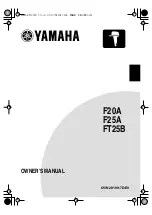
Tigercat System Board Manual
Serial Port
- A communications port
used to connect peripherals such as
modems and mice.
Setup
- A program that allows you to
make changes to the system configura-
tion.
Shadow RAM
- A technique used to
load a duplicate copy of BIOS from
slower ROM into faster RAM. This
enhances system performance because
it provides higher access speed to the
BIOS.
SIMM -
An acronym for Standard
Inline Memory Module. A small printed
circuit board containing memory chips.
SDRAM
- An acronym for Synchro-
nous Dynamic Random Access
Memory or Synchronous DRAM. A
DRAM designed to deliver bursts of
data at very high speed using automatic
addressing, multiple page interleaving
and a synchronous (or clocked) inter-
face.
Synchronous Cache
- A type of cache
that uses a clock signal to latch the in-
puts and the data output. This struc-
ture spreads the cache access across two
or three cycles while maintaining a
bandwidth of one access per cycle.
Improves performance by 5-10%.
Unbuffered DIMMs
- The unbuffered
DIMM modules do not use any buffer
logic chips, thus achieving faster opera-
tion due to the elimination of the
propagation delay of the logic buffer.
This increase in speed comes at the cost
of reducing the maximum number of
modules on the same system board.
USB
- An acronym for Universal Se-
rial Bus. The simple and flexible way
to connect devices to your desktop or
notebook PC. USB allows virtually un-
limited PC expansion with no more
hassles over add-in cards, dip switches,
jumper cables, software drivers, IRQ
settings, DMA channels and I/O ad-
dresses. With USB, you can attach and
detach peripherals without opening the
computer or even shutting it down.
VESA
- An acronym for Video Elec-
tronics and Standards Association.
VESA Local Bus (VL-Bus)
- A high
performance bus designed by VESA. A
32-bit version of the ISA bus which op-
erates at the speed of the computers
CPU. See
PCI and ISA.
VRM
- Voltage Regulator Module.
Supplies CPU specific voltages for the
Secondary CPU.
Warm Boot
- Restarting the system by
simultaneously pressing the <Ctrl>,
<Alt> and <Delete> keys.
Write-Back Cache
- Upon a cache hit,
the cache is updated and the main
memory is not affected. Upon a cache
miss, only the main memory is updated.
Glossary
79




































